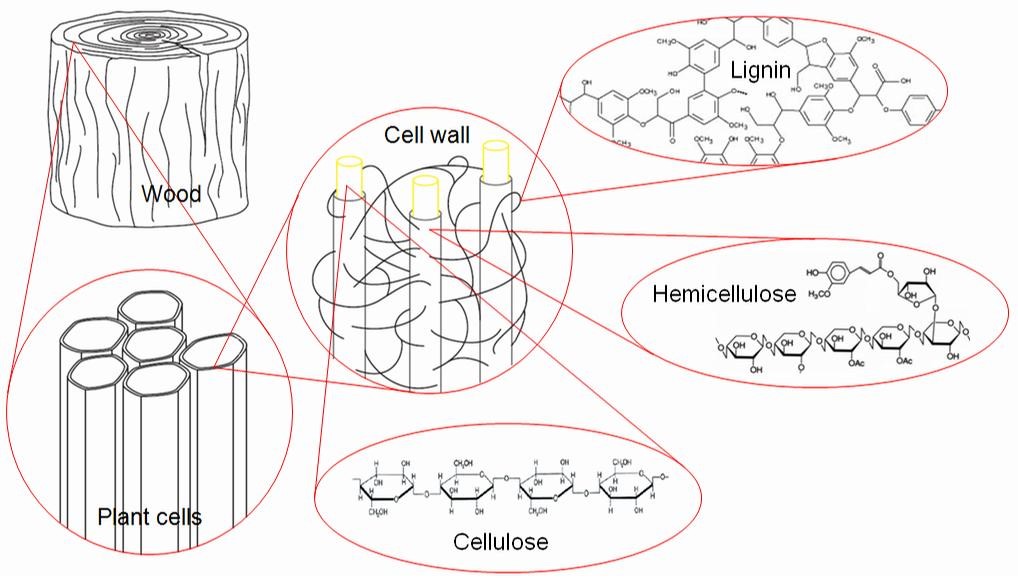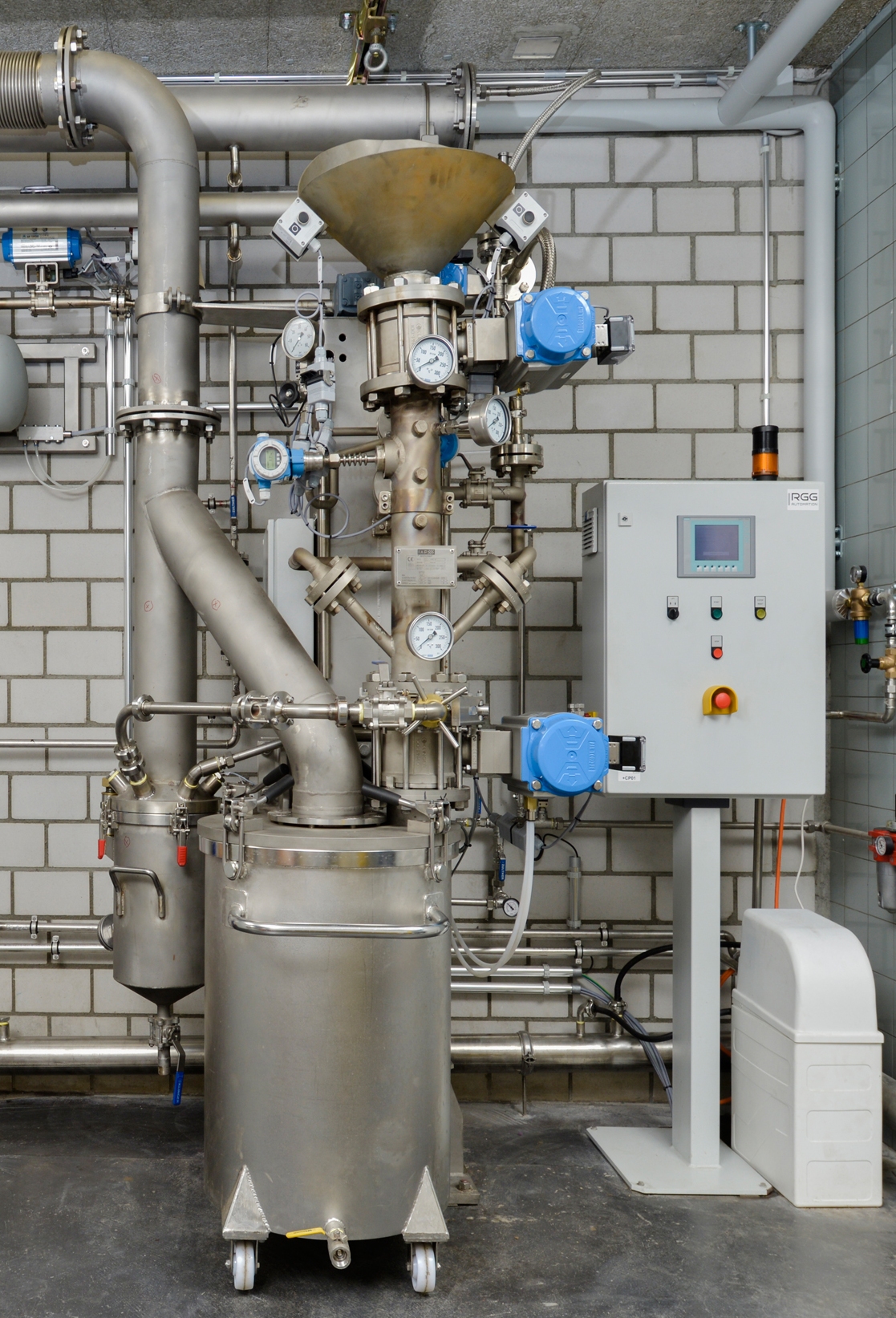Green Chemistry
Second generation biofuels (e.g. bioethanol) produced from lignocellulosic materials like wood, agricultural side products or energy crops show energetic, economic and environmental advantages in comparison to biofuels from starch or sugar.
However, physical and chemical barriers caused by the entanglement of the main components of lignocellulosic biomass, hinder the enzymatic hydrolysis of cellulose and hemicellulose to fermentable sugars. Therefore, pretreatment steps aim at breaking down the lignin structure and disrupting the crystallinity of cellulose to enhance enzyme accessibility to the cellulose.
We are studying a special steam pretreatment method which can provoke alterations in the structure of lignocellulose. The specialty of this treatment is that repolymerisation reactions of the lignin during pretreatment can be prevented. This allows for high sugar yields in the following enzymatic hydrolysis of the cellulose. The sugars can then be fermented to biofuels as ethanol or butanol.
Next to the production of biofuels from cellulose, we are investigating a novel concept for the conversion of the obtained lignin into valuable chemicals. Due to the aromatic structure of the lignin polymer and the large availability as a renewable carbon source, the conversion of lignin into aromatic chemicals is an attractive approach. The application potential of the lignin for the production of polymers is also investigated.
Keywords:
biorefinery, second generation biofuels, lignocellulose, lignin, steam pretreatment, enzymatic hydrolysis, steam explosion pretreatment

